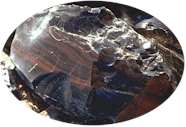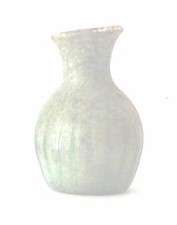Glass and mirrors - A rich history
Glass history Part 1
5000 BC - AD 100
» The discovery of glass

Glass probably exists since the beginnings of time, formed as a result of high temperature .... Glass history »»
Glass history Part 2
AD 100 - Industrial Revolution
» The Roman influence

The Romans have made it possible that the knowledge of making glass could be spread so quick and in such a large area. With its conquests, trade relations, road building, ....Glass history Part II »»
Glass history Part 3
Industrial Revolution - Present day
» A craft becomes industry

It was not until the latter stages of the Industrial Revolution, however, that mechanical technology for mass production and in-depth scientific research into the relationship between the composition of glass and its physical qualities began to appear in the industry.....Glass history Part III »»
The history of mirrors

Mirrors are used by man long befor the discovery of making glass. Made of metal ....Mirror history »»
Glass and Mirrors.
The history of Glass - Part 3
Industrial Revolution
» A craft becomes an industryIt was not until the latter stages of the Industrial Revolution, however, that mechanical technology for mass production and in-depth scientific research into the relationship between the composition of glass and its physical qualities began to appear in the industry.
Late 19th century
» Increasing automationA key figure and one of the forefathers of modern glass research was the German scientist Otto Schott (1851-1935), who used scientific methods to study the effects of numerous chemical elements on the optical and thermal properties of glass. In the field of optical glass, Schott teamed up with Ernst Abbe (1840-1905), a professor at the University of Jena and joint owner of the Carl Zeiss firm, to make significant technological advances.
Another major contributor in the evolution towards mass production was Friedrich Siemens, who invented the tank furnace. This rapidly replaced the old pot furnace and allowed the continuous production of far greater quantities of molten glass.
1900-1925
» Modern flat glass technologyTowards the end of the 19th century, the American engineer Michael Owens (1859-1923) invented an automatic bottle blowing machine which only arrived in Europe after the turn of the century. Owens was backed financially by E.D.L. Libbey, owner of the Libbey Glass Co. of Toledo, Ohio. By the year 1920, in the United States, there were around 200 automatic Owens Libbey Suction Blow machines operating. In Europe, smaller, more versatile machines from companies like O'Neill, Miller and Lynch were also popular.
Added impetus was given to automatic production processes in 1923 with the development of the gob feeder, which ensured the rapid supply of more consistently sized gobs in bottle production. Soon afterwards, in 1925, IS (individual section) machines were developed. Used in conjunction with the gob feeders, IS machines allowed the simultaneous production of a number of bottles from one piece of equipment. The gob feeder-IS machine combination remains the basis of most automatic glass container production today.
1905-1914
In the production of flat glass (where, as explained earlier, molten glass had previously been poured onto large tables then rolled flat into "plates", cooled, ground and polished before being turned over and given the same treatment on the other surface), the first real innovation came in 1905 when a Belgian named Fourcault managed to vertically draw a continuous sheet of glass of a consistent width from the tank. Commercial production of sheet glass using the Fourcault process eventually got under way in 1914.
Around the end of the First World War, another Belgian engineer Emil Bicheroux developed a process whereby the molten glass was poured from a pot directly through two rollers. Like the Fourcault method, this resulted in glass with a more even thickness, and made grinding and polishing easier and more economical.
1910
An off-shoot of evolution in flat glass production was the strengthening of glass by means of lamination (inserting a celluloid material layer between two sheets of glass). The process was invented and developed by the French scientist Edouard Benedictus, who patented his new safety glass under the name "Triplex" in 1910.
1917
In America, Colburn developed another method for drawing sheet glass. The process was further improved with the support of the US firm Libbey-Owens and was first used for commercial production in 1917.
1928
The Pittsburgh process, developed by the American Pennvernon and the Pittsburgh Plate Glass Company (PPG), combined and enhanced the main features of the Fourcault and Libbey-Owens processes, and has been in use since 1928.
1959
The float process developed after the Second World War by Britain's Pilkington Brothers Ltd., and introduced in 1959, combined the brilliant finish of sheet glass with the optical qualities of plate glass. Molten glass, when poured across the surface of a bath of molten tin, spreads and flattens before being drawn horizontally in a continuous ribbon into the annealing lehr.
Conclusion
Although this brief history comes to a close nearly 40 years ago, technological evolution naturally continues. Not yet ready to be "relegated" to a history of glass are areas such as computerized control systems, coating techniques, solar control technology and "smart matter", the integration of micro-electronic and mechanical know-how to create glass which is able to "react" to external forces.
Glass history Part 1
5000 BC - AD 100
Glass history Part 2
AD. 100 - Industrial Revolution